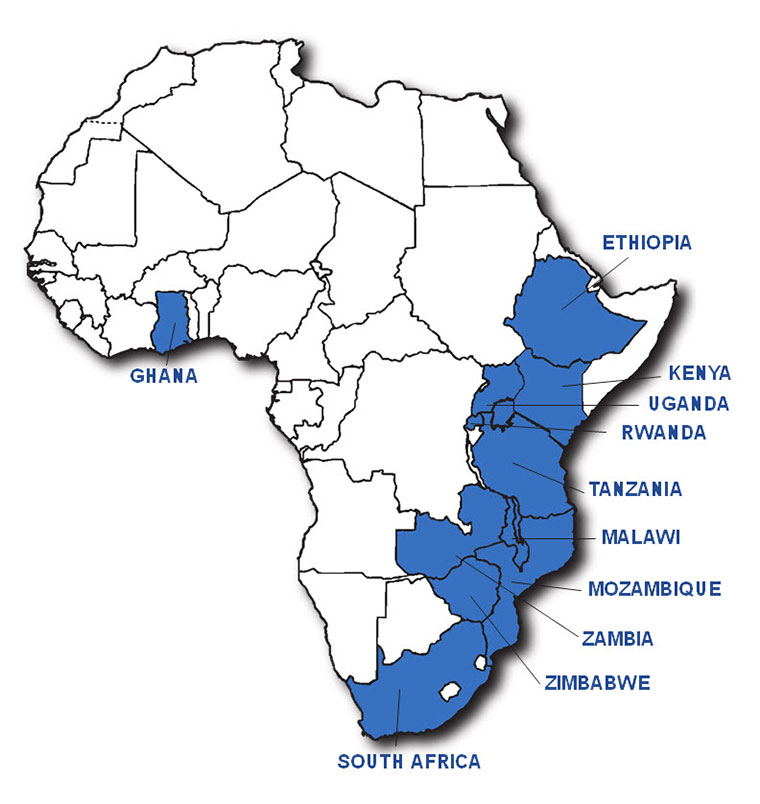Australia Africa Community Engagement Scheme (AACES) Annual Report 2012-13
This is the second annual report for the Australia Africa Community Engagement Scheme (AACES). AACES is a partnership of the Australian Government, ten Australian non-government organisations (NGOs) and their Africa-based partners. The $90 million program is being implemented over five years (2011–16).
AACES contributes to poverty reduction in Africa through community-based interventions across the sectors of food security, maternal and child health, and water, sanitation and hygiene. It is being implemented in 11 African countries:
- Ethiopia
- Ghana
- Kenya
- Malawi
- Mozambique
- Rwanda
- South Africa
- Tanzania
- Uganda
- Zambia
- Zimbabwe.
The program targets people among marginalised communities, with particular attention to women, children, people with disability and people exposed to disaster.
AACES objectives
- To give marginalised people sustainable access to the services they require
- To strengthen the policies and programs of the Australian Government in Africa, particularly in their ability to target and serve the needs of the marginalised people
- To better inform the Australian public about development issues in Africa.
AACES approach
Partnership is a central feature of the AACES program and contributes towards effective program implementation and sustainability of project activities. These partnerships involve relationships between Australian NGOs and their African partners, NGOs and the Australian Government, African NGOs and the local communities, African NGOs and government counterparts, as well as local communities and their governments.
Community empowerment involves building on the existing assets, strengths and resources of communities and supporting them to be the architects of their own development aspirations. The AACES program is community led, with a focus on empowering communities to provide solutions to their own problems and challenges.
AACES provides partners with a strong platform to network and collaborate. Focusing on sharing learning and synergies in this way results in improvements to program results, efficiency and effectiveness.
Innovation is encouraged among AACES partners in recognition that new models and approaches can have catalytic effects on other programs beyond AACES. The AACES innovation fund provides this important learning element, giving AACES partners the opportunity to collaborate creatively to try new ways of working.
Value for money is a way of thinking about how to use available resources in the best possible way. It is part of AACES monitoring and evaluation assessment processes and is used to assess the merit or worth of the program and help guide improvements during implementation. The approach is guided by the core principles of balancing economy, efficiency and effectiveness in ways that are equitable and ethical.
Joint management of the program is achieved through the Program Steering Committee (PSC), the central decision-making body of the program. PSC membership includes representatives from the Australian NGOs, their Africa partners, and the Australian Government. Positions of chair and vice-chair rotate among members on an annual basis.
A resource facility managed by the African Capacity Building Foundation provides logistical, administrative and technical services to the program to support effective communication, coordination and management of program activities.

